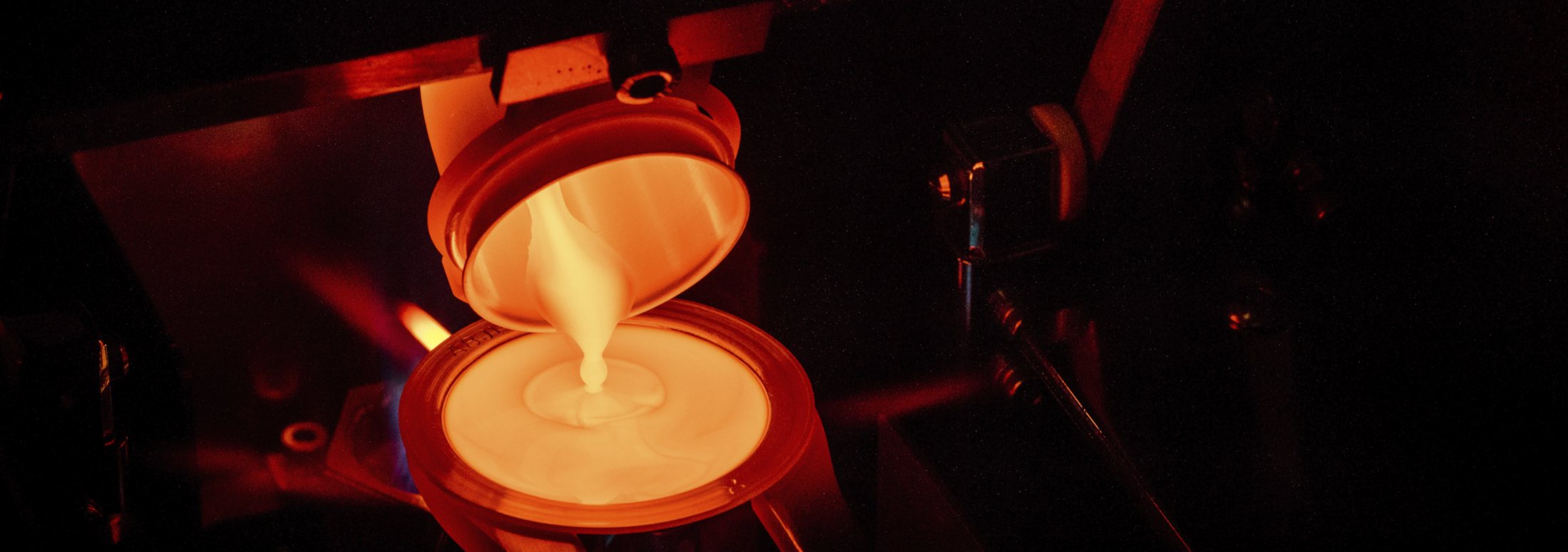Fusion Furnaces and Their Applications
What are fusion furnaces and how are they used?
Fusion furnaces are machines designed to carry out sample preparation for analysis via x-ray fluorescence (XRF) spectroscopy and inductively-couple plasma (ICP) spectroscopy.
XRF and ICP spectroscopy are powerful techniques for chemical and elemental techniques, but each has very specific requirements for sample preparation. Fusion furnaces help to achieve high quality sample preparation through the controlled application of heat.
When preparing samples using fusion furnaces, the sample must first be finely ground to a powder. This powder is then mixed with a flux and introduced to the fusion furnace. Within the fusion furnace, the flux and sample mixture undergoes controlled heating in a crucible to high temperatures in the region of 1000 C to 1200 C. Typically, fusion furnace crucibles are made from platinum, which offers high-temperature strength and remains resistant to chemical attack at elevated temperatures. The application of heat within the fusion furnace causes the flux to melt, at which point the powdered sample dissolves within it.
What happens next depends on the application. For XRF sample preparation, the flux/sample mixture is cast into a mold, where it cools down to form a solid bead or disc. For ICP applications, the hot molten mixture from the fusion furnace is poured into a beaker filled with diluted acid.

Applications and advantages of fusion furnaces
Preparation of samples for XRF and ICP spectroscopy are the two primary applications of fusion furnaces.
XRF spectroscopy utilizes X-rays to probe samples prepared in “fused bead” or “fused disc” form.1 Exposing the sample to X-rays of a known energy causes secondary fluorescent x-rays to be emitted. Measuring the precise energy of these emitted X-rays and calculating the difference in energy between them and the incident X-rays enables the electronic structure of atoms – and hence the chemical make-up of the sample – to be deduced.
XRF ideally requires homogeneous distribution of the sample throughout the bead/disc. Because fusion furnaces fully dissolve the sample in the flux solvent, it is able to fully disperse throughout the bead or disc. Compared to other XRF sample techniques such as bead-pressing, fusion furnaces provide superior homogeneity and therefore enable more accurate XRF analysis.
ICP spectroscopy instead relies on the ionization of samples using plasma. Unlike XRF, samples are introduced to ICP equipment in liquid form. While this can be carried out at room temperature using aggressive acids (a process known as acid digestion), this process is typically time-consuming and involves multiple steps. By contrast, fusion furnaces are able to completely dissolve samples within minutes without the use of strong acids. This makes fusion furnaces a much faster and safer alternative to acid digestion for the preparation of ICP samples.2
Fusion furnaces from XRF Scientific
XRF has been developing their expertise fusion furnace technology for over 25 years and is now one of the world’s leading suppliers of fusion furnaces to the mining, construction, and chemical industries. We offer a wide range of fusion furnaces to suit all research applications, including both gas and electric fusion furnaces.
Our electric fusion machines offer the lowest levels of contamination to enable sensitive analysis. These include the Modutemp shaking fusion furnace (capable of producing up to 30 fused beads per hour) as well as the xrFuse range of fully automated fusion furnaces.
Our Phoenix line of gas-powered fusion furnaces offers the highest levels of automatic throughput, providing cost-effective solution for any scale of laboratory.
To find out more about our world-leading fusion furnace solutions, get in touch with XRF scientific today.
References and Further Reading
- Watanabe, M. Sample preparation for X-ray fluorescence analysis IV. Fusion bead method―part 1 basic principals. 6 (2015).
- XRF and ICP analysis – Reasons why you should use Fusion to prepare your samples – Materials Talks. https://www.materials-talks.com/xrf-and-icp-analysis-reasons-why-you-should-use-fusion-to-prepare-your-samples/ (2017).









